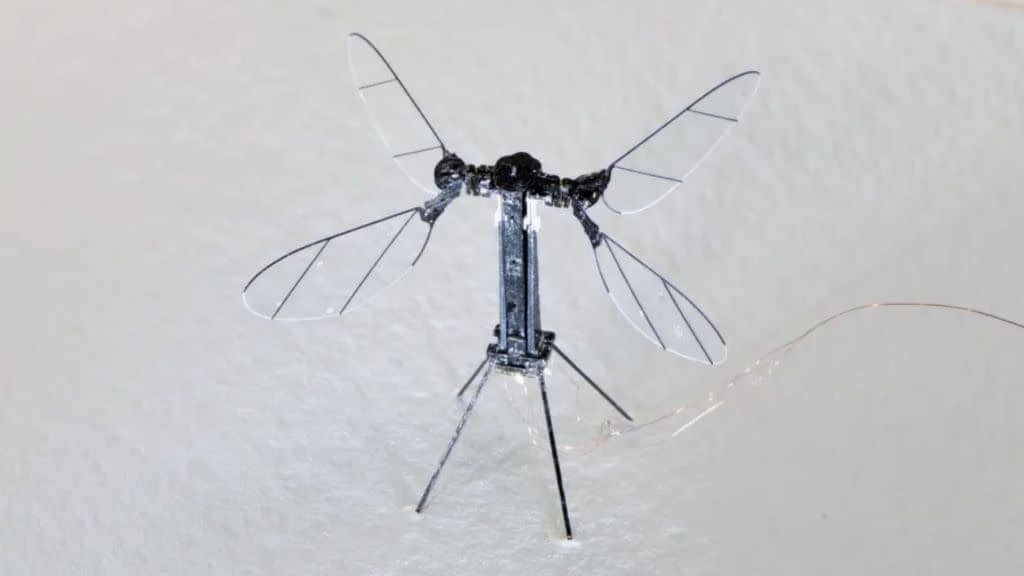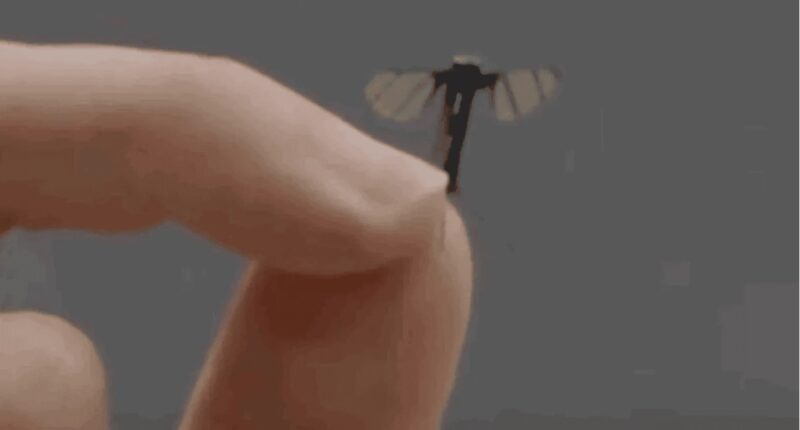China ha presentado un mini-UAS de las dimensiones de un mosquito, para tareas de vigilancia y reconocimiento en apoyo de operaciones encubiertas. Desarrollado y fabricado por la National University of Defense Tecnology (NUTD), el dron dispone de pequeñas alas y tres patas que además de sus dimensiones, simulan el comportamiento en vuelo del insecto real. Está equipado con cámaras ultra pequeñas y micrófonos, que permiten adquirir imagen, sonido y señales electrónicas, resultando muy difícil de detectar, por lo que constituye una herramienta extraordinaria para misiones ISR.
China has developed a mosquito-sized unmanned aerial system designed to support stealth military operations, according to state media.
Built by the state-owned National University of Defense Technology (NUDT) in Hunan Province, the tech features leaf-shaped wings and three hair-thin legs, a design aimed at mimicking the flight and appearance of real insects.
It is equipped with ultra-small cameras and microphones to capture images, sound, or electronic signals, making it ideal for covert reconnaissance missions.
Its size reportedly allows it to hide in the palm of a hand or slip through windows, making it nearly invisible to the naked eye and difficult to detect using conventional radar.
“Here in my hand is a mosquito-like type of robot,” South China Morning Post reported, citing NUDT student Liang Hexiang. “Miniature bionic robots like this one are especially suited to information reconnaissance and special missions on the battlefield.”
NUDT also presented a four-winged prototype variant, which can be operated via smartphone.
The Limits of Going Small
Beyond the battlefield, palm-sized drones could play a role in navigating through rubble to locate survivors, or monitoring air and water quality in hard-to-reach places.
But there are tradeoffs. These systems typically suffer from limited payloads, short flight times, and constrained onboard processing power.
NUDT researchers noted that one of the major challenges in developing the mosquito drone was miniaturizing critical autonomous components, which are still unavailable on the market.
Still, the team said they have made progress in areas like micro-mechanics and artificial intelligence integration.

Rise of Miniature Drones
China’s unveiling of the mosquito-sized drone follows an earlier debut of a bird-inspired surveillance system, reportedly modeled after the Eurasian tree sparrow.
Revealed during the 2024 anniversary of the People’s Liberation Army, the drone is believed to be an ornithopter, an aircraft that stays airborne by flapping its wings.
The US military has also embraced small-scale drones. One example is the Black Hornet, a Norwegian-built microdrone about the size of a TV remote..
Although much larger than China’s mosquito drone, the Black Hornet has proven effective in real-world combat, including on the battlefield in Ukraine.
Fuente: https://nextgendefense.com


